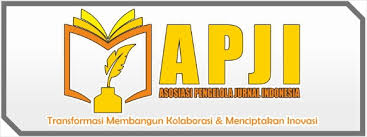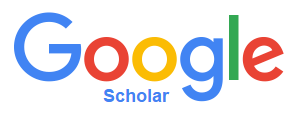AUTHOR GUIDELINES
AUTHOR GUIDELINE
TITLE
A title should be the fewest possible words that accurately describe the content of the paper. (Palatino Linotype 14, bold, Justify)
ABSTRACT
Abstract summarizes and clearly about: (1) brief background (if any); (2) The purpose and/or scope of the research; (3) The method (short) used; (4) Summary of results/findings; and (5) Conclusion. The number of words in the abstract is 150-200 words. Written with the font Palatino Linotype 10, 1 space.
INTRODUCTION
This guideline is a template for writing the manuscript for An Nafi’ submission and this guideline is available online at author guideline page on official website at: https://edujavare.com/index.php/jcr. The article should be written between approximately 3000-5000 words including body text, all tables, figures, notes, and the reference list. The article should be written in word document (MS word), 1 space (single space), and Palatino Linotype. Paper should be in prepared in A4 paper (21cm x 29.7cm) using 2,54 cm for inside margin, 2,54 cm for outside margin, and 2,54 cm for top and bottom. No need to alter page number in this template as the page number will be reordered at preprinting process.
The Introduction should provide a clear background, a clear statement of the problem, the relevant literature on the subject, the proposed approach or solution, and the new value of research which it is innovation. It should be understandable to colleagues from a broad range of scientific disciplines. Organization and citation of the bibliography are made in American Psychological Association 6th. The terms in foreign languages are written italic (italic). Authors are suggested to present their articles in the section structure: Introduction - Method - Findings and Discussion – Conclusion - References. (Justify, Palatino Linotype. 10).
METHODS
Explaining research chronological, including research method, research design, research procedure (in the form of algorithms, flow chart, storyboard or other), how to test and data acquisition, time, and place of the research (if the article based on the field research), mention the hypothesis if your article has it (optional). The description of the course of research should be supported by references, so the explanation can be accepted scientifically.
FINDINGS AND DISCUSSION
Results consist of the research findings, including description of the collected data, analysis of the data, and interpretation of the data using the relevant theory. It should be clear and concise. Discussion should explore the significance of the results of the work, not repeat them. Avoid extensive citations and discussion of published literature.
Tables and Figure
Number tables consecutively in accordance with their appearance in the text. Title of the table should be typed above the table and align text to the left, 10pt font Palatino Linotype. The word “table” and “number of the table” should be typed in bold, while title of the table should not be typed in bold (normal). Numbering for the title of table should use an English word (1, 2, 3, and so forth), table should be appeared align text to the left. To write the content of the table, it should use 9pt Palatino Linotype and single spaced.
Source of the table should be typed below the table, align text to the left, 10pt Palatino Linotype.
Table 1. The sample of table format
|
No |
Description |
Explanation |
|
1 |
Description 1 |
Explanation |
|
2 |
Description 2 |
Explanation |
|
3 |
Description 3 |
Explanation |
|
4 |
Description 4 |
Explanation |
|
5 6 |
Description 5 Description 6 |
Explanation Explanation |
|
7 |
Description 7 |
Explanation |
Picture, graph, figure, photo, and diagram should be placed at the center. Picture, graph, figure, photo, and diagram should not be in colorful type (should be in white and black, or grayscale), and if it made in color, it should be readable when it later printed in grayscale.
Number and title should be typed above the picture, graph, figure, photo, and diagram. Title of the figure should be numbered (use an English letter, 1, 2, 3 and so forth), typed in 10 pt Palatino Linotype (in normal, not bold), center and single spaced. A title should comprise a brief description of the illustration/figure. Keep text in the illustrations themselves to a minimum but explain all symbols and abbreviations used. The lettering on the artwork should be clearly readable and in a proportional measure and should have a finished, printed size of 9 pt for normal text and no smaller than 7 pt for subscript and superscript characters. Figures should have a brief description in the main body of text. Please mention the source of taken figure and write it below figure, align text to the left, 10pt font Palatino Linotype.
Please kindly avoid mentioning position of figure/table e.g. “figure below” or “table as follow” because the position will be rearranged in lay-outing process.
Conclusion: This is the last section which contains conclusions and suggestions. The conclusion will be the answer to the hypothesis, research objectives and research findings. Conclusions do not have to be just a rehash of results and discussion. It should be a summary of the research results as expected by the author in the research objective or hypothesis. Advice contains suggestions related to further ideas from the research.
Bibliography: All references used in the article should be listed in this section. In this section, all references used must be taken from primary sources (scientific journals and at least 80% of all references) published in the last ten years. Each article must have at least ten references. In this case the author is advised to use the Management Reference (Mendeley, Zotero, etc.) by using the APA Style.











